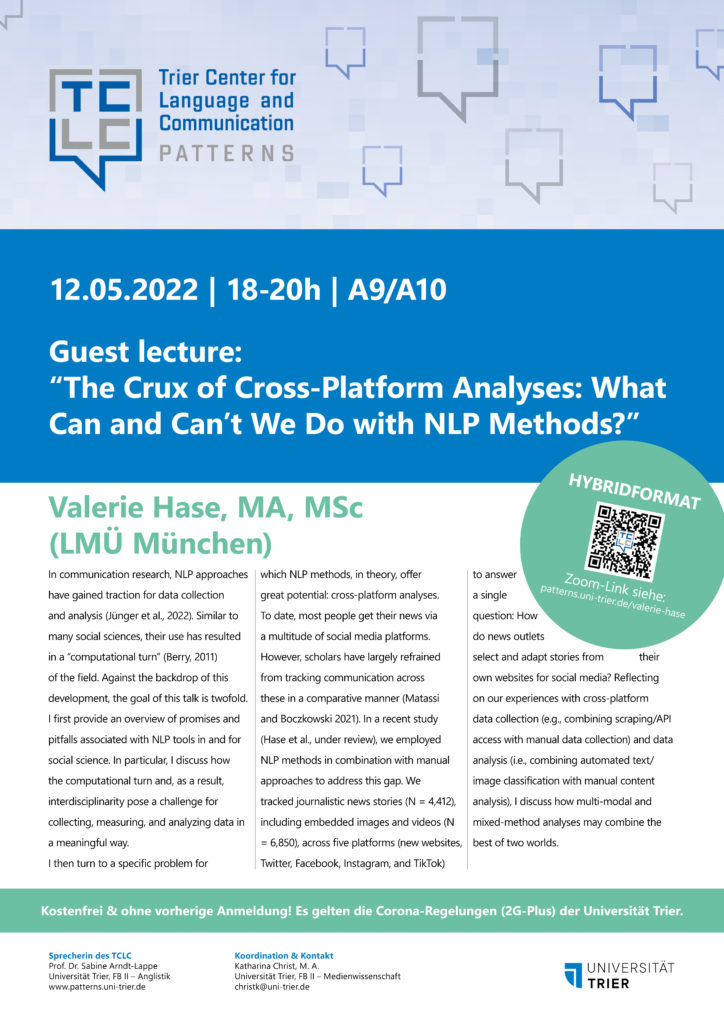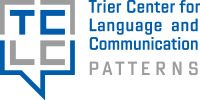
The Crux of Cross-Platform Analyses: What Can and Can’t We Do with NLP Methods?
Thursday, 05. May 2022
HYBRIDFORMAT
Abstract:
In communication research, Natural Language Processing (NLP) approaches have gained traction for data collection and analysis (Jünger et al., 2022). Similar to many social sciences, their use has resulted in a “computational turn” (Berry, 2011) of the field. Against the backdrop of this development, the goal of this talk is twofold.
I first provide an overview of promises and pitfalls associated with NLP tools in and for social science. In particular, I discuss how the computational turn and, as a result, interdisciplinarity pose a challenge for collecting, measuring, and analyzing data in a meaningful way.
I then turn to a specific problem for which NLP methods, in theory, offer great potential: cross-platform analyses. To date, most people get their news via a multitude of social media platforms. However, scholars have largely refrained from tracking communication across these in a comparative manner (Matassi and Boczkowski 2021). In a recent study (Hase et al., under review), we employed NLP methods in combination with manual approaches to address this gap. We tracked journalistic news stories (N = 4,412), including embedded images and videos (N = 6,850), across five platforms (new websites, Twitter, Facebook, Instagram, and TikTok) to answer a single question: How do news outlets select and adapt stories from their own websites for social media? Reflecting on our experiences with cross-platform data collection (e.g., combining scraping/API access with manual data collection) and data analysis (i.e., combining automated text/image classification with manual content analysis), I discuss how multi-modal and mixed-method analyses may combine the best of two worlds.



